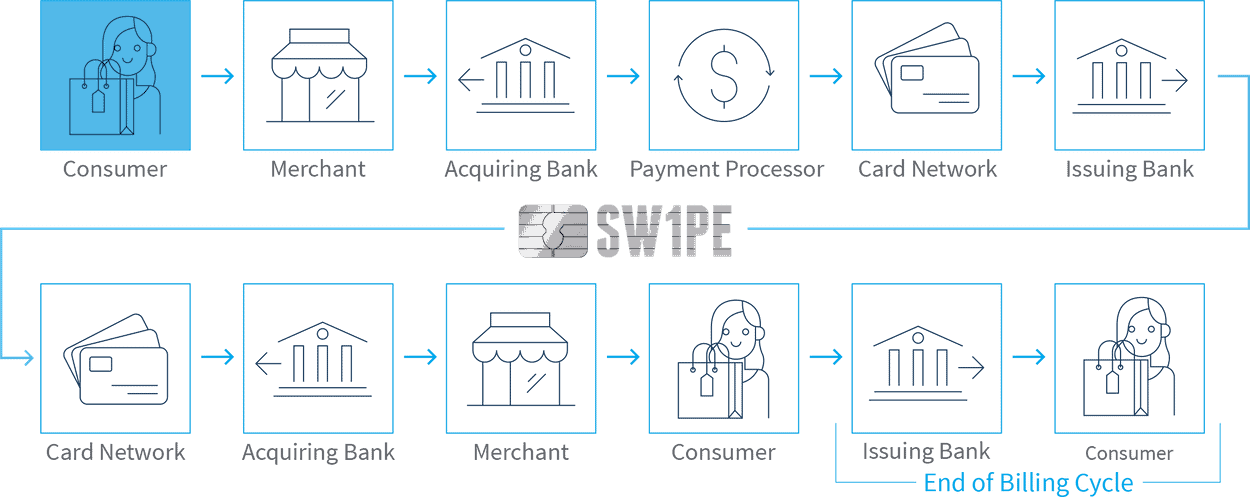Interchange Fees
Every time a customer uses a credit or debit card in your store, a fee is charged by the cardholder’s bank. This fee can vary greatly, depending on which type of cards are being used by your customers and whether the payment is being made in person, with a chip, swiping a card, or made over the phone or online. These fees are determined by card brands based on your industry type and these rates are subject to changes every year.


Assessment Fees
Associations such as Mastercard or Visa also collect fees, called dues and assessments, for the use of their card brands and the ability to process transactions through their payment networks. Additionally, there are added fees for sales when internationally-issued cards are used.
Risk and PCI Compliance
PCI DSS is a security standard that all businesses accepting credit card payments must comply with. PCI compliance requires merchants to safely and securely accept, store, process, and transmit cardholder data during debit and credit card transactions. PCI compliance needs to be reviewed and updated 3 to 4 times a year to make sure that your business remains compliant. You, the merchant, need to be PCI compliant in case of a data breach. Maintianing PCI compliance is the only way to ensure the bank will take responsibility for data breach losses instead of your business. Sw1pe will assist with ensuring your company is PCI compliant and will remind you when you need to review and update your PCI compliance information.


Card-Present Payments
You pay a lower transaction fee when a customer taps, inserts, or swipes their card in person. This is because there is a lower perceived risk of fraudulent activity when the cardholder is present at the point of sale.
Card-Not-Present Payments
There are multiple types of card-not-present payments. Because there is a perceived higher risk of fraudulent activity when the cardholder is not present, the interchange rate will be higher for these transactions.
When you manually key in your customer’s card details or use a “card on file,” this is the highest interchange percentage that you will have to pay. Having your customer fill out their own credit card information on your payment site will reduce this percentage.

Contact Us
for a Free
Evaluation
Call

